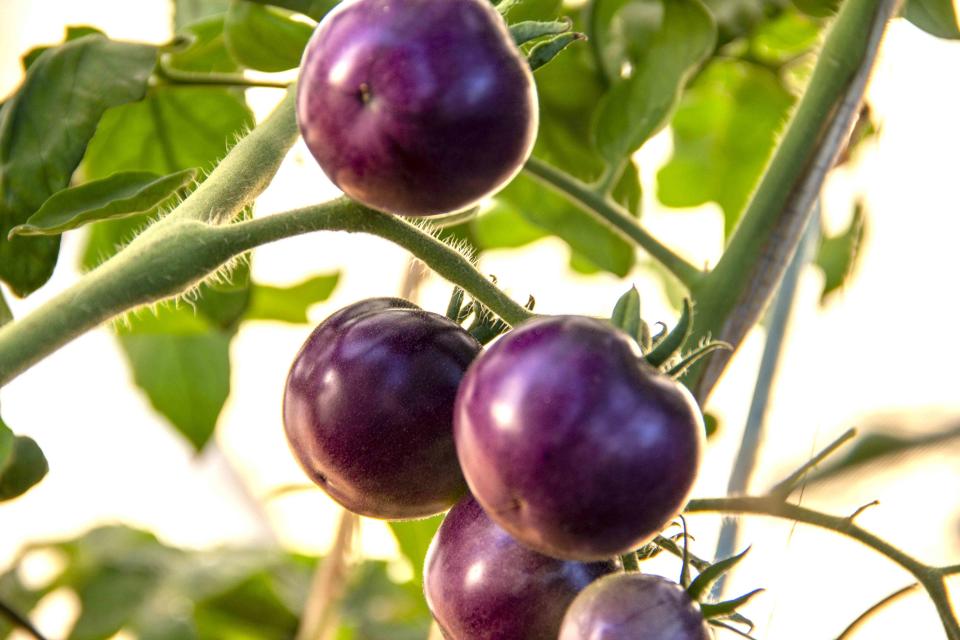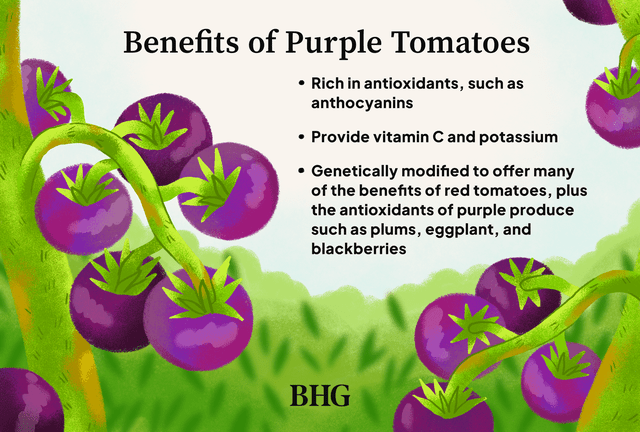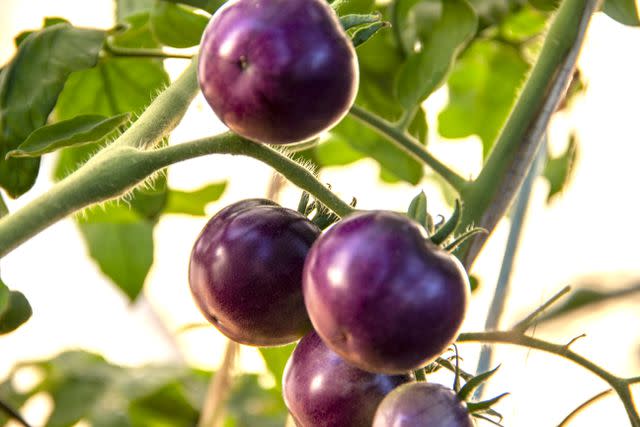Are Purple Tomatoes the Next Big Veggie?
Packed with color, flavor, and antioxidants, the purple tomato might just be the next splash of color on your plate.

Move over, red tomatoes. There’s a new tomato in town, and it’s promising to be even healthier than its already uber-healthy red counterpart: Meet the purple tomato.
Recently approved by the USDA, purple tomatoes aren’t yet on store shelves, but they’re already earning accolades from nutrition experts. What’s the draw behind them? Simply put, the color purple.

Why Purple Tomatoes Up the Game
There’s a common saying among nutrition experts that you should eat the rainbow, which refers to consuming a wide variety of colorful fruits and vegetables. The trouble is, only about one in 10 Americans eats the recommended servings of fruits and vegetables, according to the Centers for Disease Control and Prevention. As if that’s not bad enough, “They’re also not eating enough purple fruits and vegetables,” says Jen Scheinman, R.D., dietitian and nutrition affairs manager of Timeline Nutrition.
Why does that matter? Because purple produce is loaded with anthocyanins, bioactive compounds with powerful antioxidants that fight disease.
“Recent studies show beneficial links between anthocyanins and cardiovascular health, blood sugar control, improved memory and prevention of cancer, although more research is needed to prove these relationships,” says Emma Laing, Ph.D., R.D.N., director of dietetics at the University of Georgia in Athens and national spokesperson for the Academy of Nutrition and Dietetics.
These anthocyanins are responsible for giving red-orange and blue-violet coloration to flowers, vegetables, beans, and fruits. Examples include plums, grapes, eggplant, red cabbage, red onions, cherries, blueberries, and blackberries—and now purple tomatoes.
“Purple tomatoes are genetically modified so that they have higher levels of anthocyanins than traditional red tomatoes,” Scheinman says. A study from Heliyon shows they have higher levels of antioxidants, lutein and B-carotene than red cherry tomatoes.
Tip
Genetically modified purple tomatoes may not align with your personal stance on GMOs. However, Laing reminds consumers that the FDA, USDA, and EPA have deemed that GMOs are safe.
Like red tomatoes, purple tomatoes also have vitamin C, potassium, and another antioxidant known as lycopene, which red tomatoes are famous for. Eating tomatoes has been shown to reduce the risk of health conditions such as heart disease and certain cancers, thanks in large part to the lycopene that increases during the ripening and cooking of red tomatoes, Laing says. However, how much lycopene purple tomatoes have is still unknown.

What to Know Before You Try Purple Tomatoes
Because tomatoes are one of the most widely consumed vegetables, this new purple variety could offer a way for Americans to eat more of the healthy compounds in purple produce. Scheinman suggests this might be one reason researchers decided to engineer purple tomatoes.
Use them just as you would any other tomato. Try them in salads, sandwiches, and as a stand-alone snack, or add them to soups and sauces.
“The taste would probably be similar to red tomatoes, but the dark color may take some getting used to for some people,” Scheinman says.
For more Better Homes & Gardens news, make sure to sign up for our newsletter!
Read the original article on Better Homes & Gardens.

